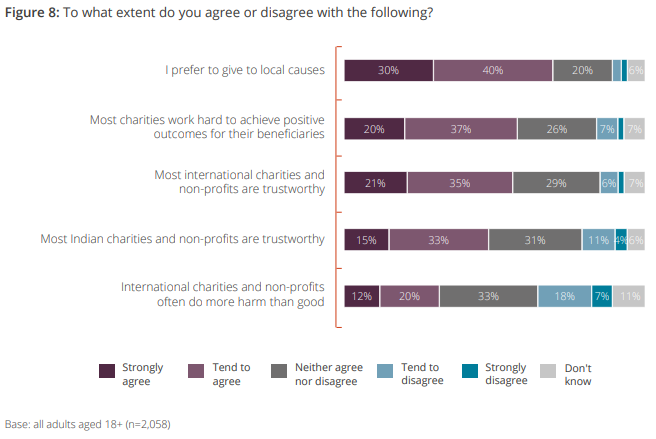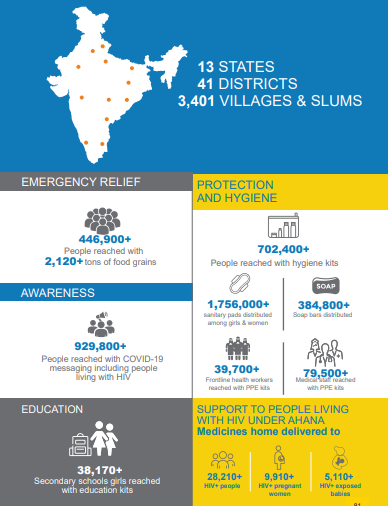Is the average Indian giving
Preliminary thoughts on whether Indian’s give with the help of Plan India and Save The Children India Annual Reports 2019-20
Recently AFAQS had a brief chat with Ketto’s co-founder and CEO Varun Sheth on India’s crowdfunding scene, the challenges he faces, and if Indians really donate.
Do you think Indian’s are donating asked AFAQS?
“Our view is that people donate, but they do it a bit differently. If you look at the Bain India Philanthropy Report 2020, there are close to around 300 million Indians who donate, it’s the largest in the world.
The way we donate is usually at a temple, going to a religious organisation, to people at the railway station. We give it to people around us, like a building watchman. People abroad don’t do this – they don’t give money to their household help or the watchman.”
He further added that at Ketto they are trying to create a new format of giving. “Something which is completely digital, transparent, allows you to start at as low as Re 1. And also something which keeps you updated about the progress (of the crowdfunding campaign).”
On Ketto campaigns, if you choose to pay via a card, the minimum amount is Rs 300. But if you choose other options, such as NEFT, UPI, QR codes, you can donate as low as Re 1.
Varun isn’t wrong.
According to the India Giving Report 2020: Indians prefer to give to religious organizations followed by giving money directly to the person or family in need. Even though the report showcases 2017-2019 data: charitable giving to nonprofits has reduced over time. We will have to wait till the Q1 of 2021 to see if this has changed due to the COVID-19.
Trust has been a factor. International charities have shown more trust than Indians. See the data below.
Pre COVID-19 Indian nonprofit organizations haven’t bothered attracting the common man. One obviously that Indian’s don’t give and even if they give that will be a minuscule portion. So the nonprofit organizations(NPOs) have been pretty happy with sizeable donations coming from corporates and the rich Indian philanthropies.
According to the Centre for Social Impact and Philanthropy report, NPOs primarily depend on CSR funding and are grappling with the highest order of anxiety. A third depend primarily on international funders, and one-fifth of the NPOs receive most of their funding from Indian philanthropic foundations or high net-worth individuals.
The challenge is that the majority of CSR funds are being diverted to the immediate relief work, including the PM CARES Fund. Additionally, with a shrinking economy, it is obvious that the CSR budgets will be on the radar by the corporates. NPOs dependent on Indian philanthropists noted that bureaucratic structures and slow approval processes are bottlenecks.
However, according to the EdelGive Hurun India Philanthropy List the total amount of philanthropic donations made by the top 112 richest in the country, has increased by 175% to touch ₹12,050 crores in 2020. Even the number of individuals who have donated more than ₹10 crores has increased from 37 to 78 this year.
NPOs with a primary dependence on international funders reported receiving great support including proactive engagement with NPOs and offering a flexible approach to funding. However, nonprofit organisations worry that funding from international funders may reduce in the future in light of the global impact of the pandemic.
Additionally, the present Indian government hasn’t been too happy with the way international funds have been flowing into the NPO world. The new rules notified the state that any organisation seeking registration under the Foreign Contribution (Regulation) Act (FCRA) must have operated for at least three years and spent “a minimum amount of Rs 15 lakh on its core activities for the benefit of society during the last three financial years”.
The amendments have made the FCRA, 2010 more stringent, with the prohibition of transfer of funds from one NGO to another, decrease of administrative expenses through foreign funds from 50 percent to 20 percent, making Aadhaar mandatory for registration, and giving the government powers to stop utilisation of foreign funds through a “summary enquiry”.
In the newly notified rules, the Centre has made insertion in Rule 9 – which deals with obtaining registration or prior permission to receive foreign funds – which makes the process more cumbersome for NGOs.
The government is now examining a proposal to set up a regulator for charities receiving overseas donations. The approach has been recommended by CEIB, an arm of the finance ministry.
Obviously, I am no expert in commenting on policy matters. So coming back to my quest is India or Indians giving?
With no reports out there I did what a commerce graduate would do. Read financial statements and try to get some sense. Thankfully with the Internet at my aid, I gave the Plan India Annual Report 2019-2020 a try.
The 52-page report is a detailed analysis of how the organization has been executing its strategic goals. The organization led its humanitarian drive during the ongoing COVID-19 in 13 states and 41 districts.
Plan India launched the COVID-19 response under “Project Suraksha” to support the poorest and most vulnerable people to overcome the crisis. The project promoted mass awareness on COVID-19 disease and its prevention strategies strengthened the government’s public health infrastructure and community support systems that enable poor families to access the government safety nets.
The financials section(Page 48) is where you can get a glimpse of how much the organization raised this year compared to the last year. The income and expenditure statement has a section “Individual Donation” which is ₹20,14,20,953. When compared with the figures of Corporate(₹25,19, 06,005) and Institutional Donations(₹35,91,77,257) the Individual Donations have done well.
And my guess would be that a majority of it would be via digital. Considering the offline modes were closed due to the COVID-19. (Sorry if the numbers are not accurate the scanned copy of the financials is really not visible.)
To understand a tad more I also downloaded the Save The Children India Annual Report 2019-2020.
This is how the numbers stack up for the NPO. Total Income ₹180.78 crores.
However, the audited report isn’t detailed as Plan India. Maybe they won’t show the underline brackets of income and expenditure. Overall the income for Save The Children India has dropped from 2019.
The point here I am making is that NPOs can’t ignore individual India. The job is to build trust and that will only happen by showcasing or communication. Digital is the medium but not everywhere it will work. So one needs to know the donor, the details such as what is his/her age group, and the medium she is comfortable in communicating.
According to Varun and the data provided by Ketto, it is Tier-I cities that have been giving. “Speaking about age groups, I would say it is largely between 25 and 35 years of age. We were surprised to see such a large number of people come forward to donate during the lockdown.”
Don’t listen to him or the writer of this story. Open up your Google Analytics and it will reveal the age groups that are visiting your website, which stage of the funnel they are, and the search behaviour patterns. All that and much more. Only if you have connected the GA with your website.
I understand change is difficult but do you have an option. Especially smaller and medium NPOs have no workaround other than connecting and communicating with the average Indian.







